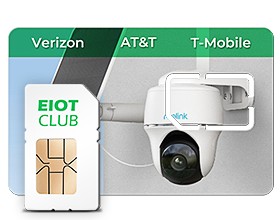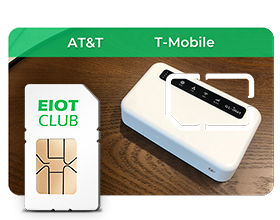Seamless Surveillance: Exploring the Role of SIM Cards in Camera Security

Navigation
- Understanding SIM Cards
- Advantages of SIM Cards in Camera Security
- Enhanced Protection With SIM Cards
- Connectivity Considerations of SIM Cards in Camera Security
- Future Trends and Innovations
Introduction
In today's world, security and surveillance systems have become indispensable for businesses and homeowners seeking to protect their properties. As these systems continue to evolve, SIM cards have emerged as an innovative connectivity solution that enhances the capabilities of security cameras. But what exactly are SIM cards, and what advantages do they offer for camera-based security solutions? This article will provide an in-depth look at how SIM card technology is transforming surveillance, enabling seamless monitoring and higher levels of protection.
Understanding SIM Cards
SIM, which stands for Subscriber Identity Module, is a small card that allows devices like cellular phones and cameras to connect to a cellular network. Much like how a SIM card links a smartphone to a carrier and enables it to transmit data, a SIM-enabled security camera can also leverage cellular connectivity to communicate and transfer footage.
There are a few types of SIM cards that can be used in security cameras:
- Standard SIM - This is the commonly used SIM for cell phones. It can be switched between carrier networks fairly easily.
- M2M (Machine to Machine) SIM - This is a special SIM designed for connecting devices like cameras for remote monitoring. It offers more reliable connectivity.
- Private/Embedded SIM - As the name suggests, this onboard SIM is permanently embedded into the camera by the manufacturer. It simplifies setup but may lack flexibility.
Whichever SIM type is chosen, it allows the camera to bypass wired internet and tap into the cellular network for wireless transmission of video footage and data.
Advantages of SIM Cards in Camera Security
SIM card integration confers security cameras with a wealth of advantages that enable seamless surveillance and enhanced protection:
- Wireless connectivity: Eliminating the need for wired connections. Hardwired security cameras can be inconvenient and restrictive to install. SIM cards replace this requirement with wireless cellular connectivity. Cameras enabled with SIM cards can be conveniently set up anywhere within cellular network coverage without complex wiring.
- Remote access: Real-time monitoring and control from anywhere
With a SIM card added to the camera, users can remotely view and manage surveillance footage in real-time from smartphones and computers. This allows for on-the-go monitoring capabilities.
- Flexibility and scalability: Easily add or relocate cameras without extensive rewiring
More cameras can be added to the surveillance system by inserting active SIMs. Their wireless connectivity also allows easy repositioning of cameras when needed, without the hassle of rewiring them.
- Backup and redundancy: Ensuring uninterrupted surveillance even during network outages
In wired cameras, network disruptions can lead to footage loss. But SIM-enabled cameras can switch to cellular data if the primary WiFi or ethernet connection fails, providing redundancy.
Enhanced Protection With SIM Cards
In addition to transmission advantages, SIM cards also unlock extra security benefits:
- Instant alerts and notifications: Receive updates on suspicious activities
Many SIM-enabled cameras support setting up real-time activity alerts that can be sent to the user's phone as notifications. This allows prompt responses to security events.
- Cloud storage integration: Safeguarding footage in case of camera tampering or theft
Storing footage in the cloud rather than locally on a memory card prevents data loss if cameras get physically compromised. SIM cards enable quick uploads to cloud storage.
- Geolocation tracking: Locating stolen or misplaced cameras using SIM card data
If a camera gets stolen or misplaced, the integrated SIM card can help trace its location through the cellular network, allowing recovery of the asset.
Connectivity Considerations of SIM Cards in Camera Security
To fully optimize a SIM-equipped camera security system, some connectivity factors need to be addressed:
- Coverage and network selection: Choosing the right SIM card provider
Carriers have varying quality of cellular coverage across different geographical areas. Selecting the right provider with the strongest coverage in the region ensures reliable connectivity.
- Data plans and costs: Optimizing data usage for efficient surveillance
Data-only plans are ideal for security cameras to minimize costs. Data usage can also be optimized by adjusting video quality as needed to avoid overages.
- Compatibility with different camera models and systems
If integrating SIM cards into an existing system, ensure the cameras support them. Newer models generally have inbuilt SIM slots, but older models may require external cellular adaptors.
Future Trends and Innovations
SIM technology continues to evolve along with security cameras, bringing better connectivity and features:
- 5G SIM cards - The superfast 5G network will enable real-time high-definition video streaming from cameras.
- eSIM adoption - eSIMs are embedded SIMs that can be reprogrammed remotely for faster setup. Their usage of cameras will likely increase.
- Biometrics access via SIM - SIM cards may integrate added security through biometrics like fingerprints to control access to footage.
- Smart camera integrations - Apps combined with SIM cards could allow smarter detections by AI-powered cameras.
These innovations will further add to the capabilities of SIM-equipped security cameras.
Conclusion
In conclusion, the effective integration of SIM card technology in security cameras provides major advantages for seamless monitoring and enhanced protection. With wireless connectivity, unlimited scalability, redundancy against network failures, remote accessibility, instant alerts, location tracking of stolen cameras, and more, SIM cards are revolutionizing surveillance. As the technology continues to advance, SIM-enabled cameras will gain even more intelligent functionalities. For both businesses and homeowners seeking robust security solutions that are convenient and versatile, migrating to SIM-based camera systems is an ideal choice for the future. The power of cellular connectivity unlocks myriad possibilities for taking camera surveillance to the next level.
FAQ:
Q1: What types of SIM cards can be used in security cameras?
A: The main options are standard cell phone SIMs, machine-to-machine (M2M) SIMs designed for IoT devices, and embedded SIMs pre-installed in cameras by manufacturers.
Q2: How can SIM cards help recover stolen security cameras?
A: The SIM card inside the camera can help track its location by leveraging cellular network location data, allowing users to pinpoint and recover stolen cameras.
Q3: What factors should I consider when selecting a SIM card provider for cameras?
A: Key considerations are signal coverage strength in your area, competitive data rates, network reliability, activation fees, and whether they offer dedicated M2M plans. We highly recommend you get your SIM cards from EIOT CLUB.





















 eSIM
eSIM
 Refill
Refill






